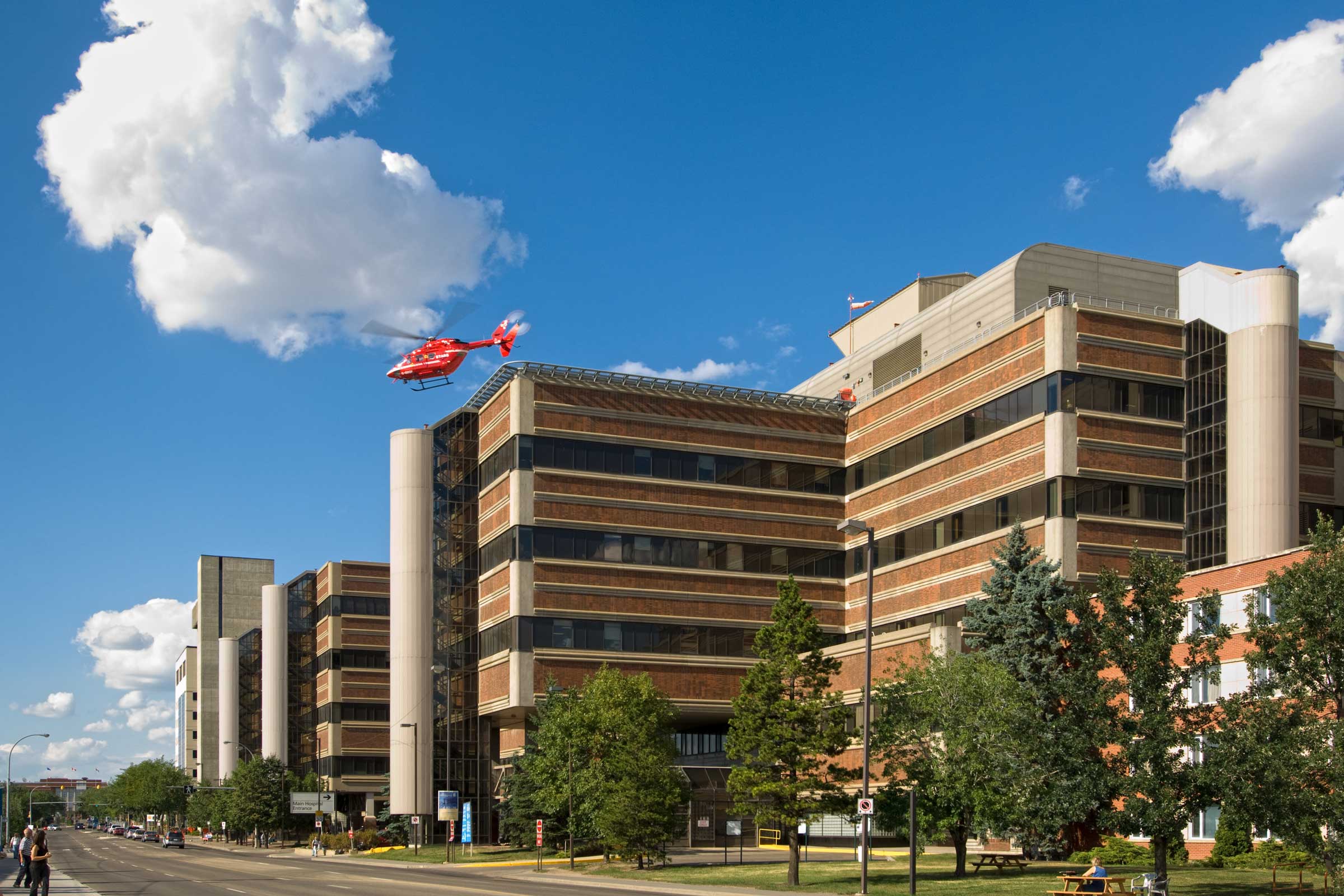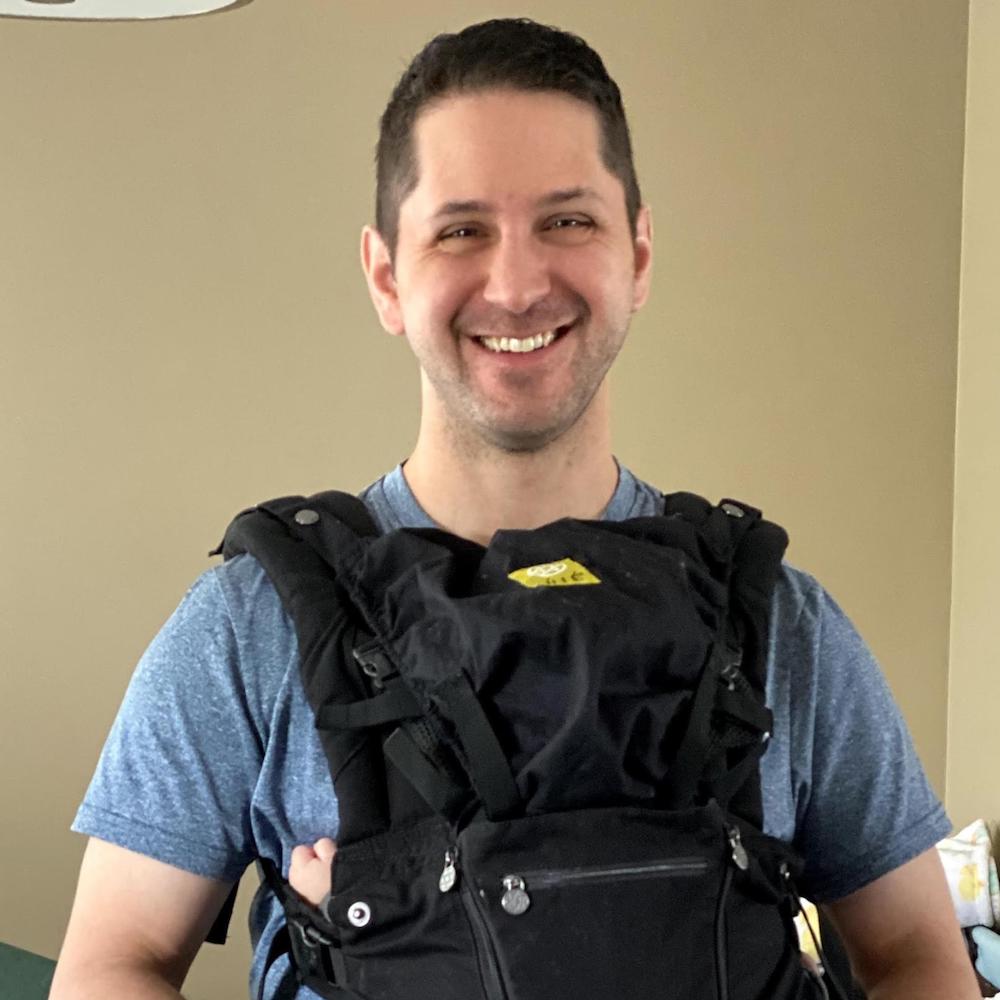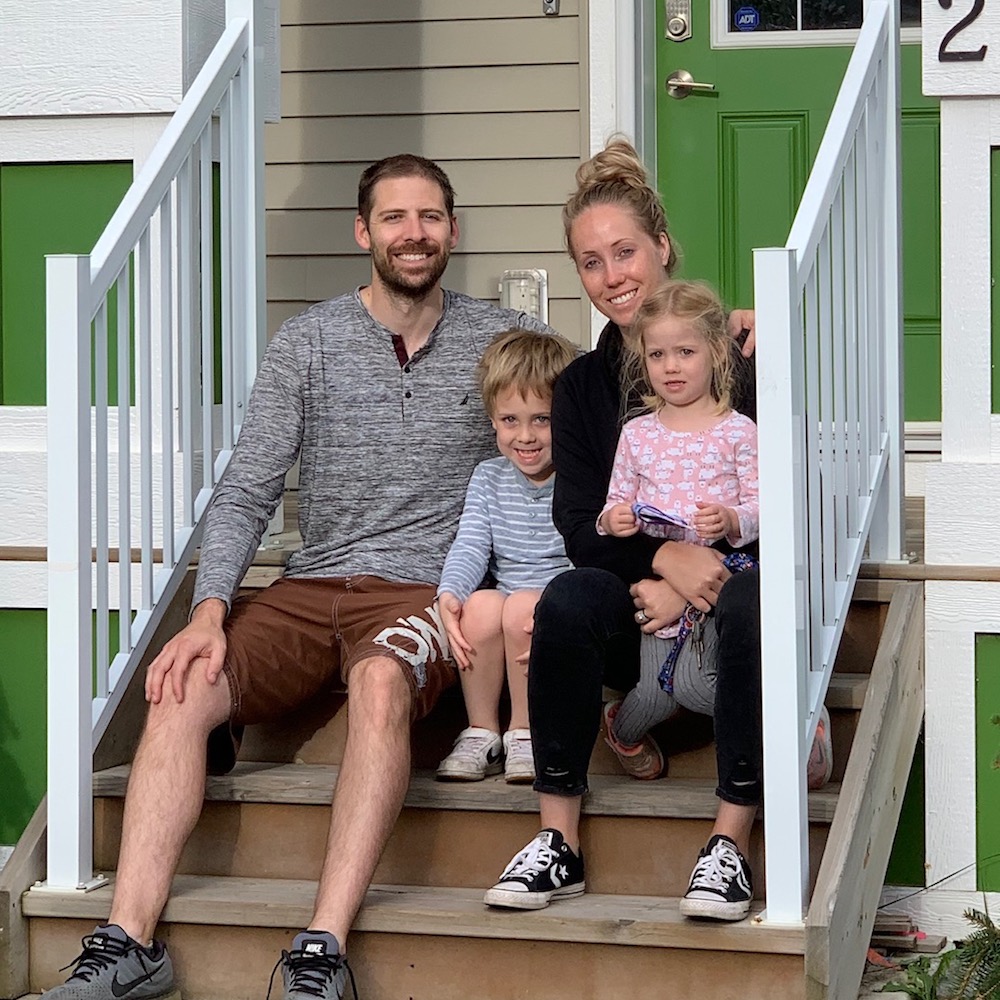Nuclear Medicine Residency Program
Welcome to the Nuclear Medicine Residency Program at the University of Alberta.
dual
CERTIFICATION IN NUCLEAR MEDICINE AND DIAGNOSTIC RADIOLOGY
>3:1
STAFF : RESIDENT RATIO
Exceptional
BREADTH OF COMMUNITY, TERTIARY, CANCER, TRANSPLANT, CARDIAC, RESEARCH EXPERIENCES AND BRAND NEW TECHNOLOGIES
Interview/CaRMS Specific Information
General Information
Virtual panel interviews (2-3 sessions, each approximately 20-30 minutes) with nuclear physicians, radiologists and residents. Each candidate will have the opportunity to meet with the program director. More details to follow.
Contact Us
Dr. Alexander Tamm
Program Director, Nuclear Medicine
Email: astamm@ualberta.ca
Phone: 780-407-2787
Program Administrator
Email: nucmed@ualberta.ca

Dr. Alexander Tamm
Program Director
Kamani Reddy
Program Administrator
Welcome to the University of Alberta Nuclear Medicine Residency Program
Our unique, well-established program effectively integrates all aspects of Nuclear Medicine and Diagnostic Radiology, paving the way for graduates to provide unrivaled personalized imaging for their patients at both a macroscopic as well as molecular level. Our program meets the requirements for successful candidates to be certified in both Diagnostic Radiology and Nuclear Medicine from the Royal College of Physicians and Surgeons of Canada.
Residents will receive training in community hospitals, academic tertiary care centers, cancer centers as well as outpatient clinics that are equipped with state-of-the-art technology. We have a diverse, large volume nuclear medicine practice (including a busy transplant center) that will give residents the necessary skills to work in any setting upon completion of the program.
Teaching is optimized by the ample number of dual-trained faculty involved in teaching only a small number of residents each year. With dedicated academic half-days for resident teaching in clinical nuclear medicine and physics, hosting the Canadian Nuclear Medicine Resident Review Course, and participating in numerous multidisciplinary rounds, our residents are well equipped to tackle the Royal College examinations.
The combination of nuclear medicine and radiology provides a highly rewarding career where no two days at work are the same. You will have the opportunity to participate in the intersection of cutting edge technology and new advances in medicine. Our residents go on to establish successful academic and community careers across North America.
We are delighted to have the opportunity to meet you, and we thank you for taking the time to consider our program. Please don’t hesitate to contact us with any questions.
Dr. Alexander Tamm
Program Director
Our Program
The aim of the University of Alberta Nuclear Medicine and Diagnostic Radiology Residency Program is to teach residents the knowledge, skills and attitudes required to function as a safe, competent and independent consultant in the specialties of Nuclear medicine and Diagnostic Radiology. This includes the abilities to supervise, advise on, perform and interpret imaging procedures at a high standard, functioning as a capable consultant to referring family physicians and specialists alike. Residents will obtain the communication skills, knowledge and technical skills required of such a consultant and will be taught to develop a personal education strategy to help establish a habit of continuous learning. The importance of the team approach to the provision of imaging services will be emphasized throughout the residency. Residents will develop the knowledge, skills and attitudes relating to critical appraisal, research methodology, data presentation and analysis pertinent to Nuclear Medicine and Radiology. They will also learn to practice ethically and consistent with the obligations and attitudes of a physician respectful and sensitive to culture, ethnicity and gender.
Our program mandate is to support and foster education, research, quality assurance and continuing professional development. We seek to engender the same sense of responsibility in our residents towards the specialties of Nuclear Medicine and Diagnostic Radiology at large, ensuring a healthy, thriving discipline that is responsive to the needs of the public and our clinical colleagues. To that end, we are committed to providing our residents with the expertise and resources necessary to achieve these goals.

Challenging and rewarding career which still allows for creativity in the workplace; no 2 days are the same.

Full integration with a complete and comprehensive Diagnostic Radiology residency program.

Provincial Picture Archiving and Communications System (PACS) and Electronic Healthcare record system (NetCare and ConnectCare).

Diverse, state-of-the-art, large volume nuclear medicine practice and equipment.

Large referral base and transplant program.

Fully funded on-line resources such as StatDx, RadPrimer, and IMAIOS e-anatomy.
Program Supports
- Transitioned to the new Royal College Competence by Design Curriculum.
- Our Diagnostic Radiology program is a published leader in Resident Wellness and has received international recognition for its COVID-19 response, including program modifications emphasizing resident safety and wellness.
- A resident-driven Social Committee hosts multiple sponsored events including annual golf tournaments, welcome/farewell events, resident social events, and more recently, virtual events.
- Dedicated radiology and/or nuclear medicine career days occur annually during the training program.
- The program draws on the expertise and mentorship of over 90 radiologists and 12 dual trained nuclear physicians.
Residency at a Glance
Our program is a seven year combined program in the Competence by Design (CBD) Royal College Curriculum.
Basic Clinical Training (Medicine, Surgery, CCU, Emergency, Orthopedics, Pediatrics, Pediatric Emergency, Pathology, Obstetrics, Neurology, Outpatient Cardiology rotations) + a transition month to radiology
Radiology with 6 months of nuclear medicine (see Diagnostic Radiology Program CaRMS website for more details; FRCPC, Diagnostic Radiology)
Nuclear Medicine (FRCPC, Nuclear Medicine)
UAH: General nuclear medicine, pediatric nuclear medicine, SPECT-CT, nuclear cardiology and PET-CT x 10-11 months
UAH: Instrumentation and in-vitro rotations x 2 months
RAH: General nuclear medicine, SPECT-CT and PET-CT x 7 months
CCI: Oncologic imaging x 3 months
CCI: NM Therapy x 1 month
Edmonton Radiopharmaceutical Center x 1 month
Outpatient Clinics x 1-2 months
Flexibility is a key feature in the final graduating year to allow residents to develop any special areas of interest and prepare for their Royal College examination.
Teaching Hospitals
The University of Alberta Hospital (including the Stollery Children's Hospital) and the Royal Alexandra Hospital are large quaternary/tertiary care hospitals serving a population in excess of 1 million people. Each hospital imaging department performs in excess of 200,000 examinations per year.
University of Alberta Hospital (UAH): 650+ bed quaternary care centre treating over 700,000 patients annually and a leading clinical, teaching and research hospital in Western Canada

Stollery Children's Hospital: referral centre for pediatric cardiac surgery in Western Canada and national leader in organ transplantation. Referral base of 1.7 million.
Royal Alexandra Hospital (RAH): features one of Canada's busiest emergency departments and one of the largest and longest serving hospitals in Edmonton.
Cross Cancer Institute (CCI): one of the two major cancer centres in Alberta, situated near University campus .
Grey Nuns Community Hospital (GNH): 267 bed large community hospital situated in southeast Edmonton providing a full range of services.
Sturgeon Community Hospital: 80 bed community hospital serving the community of St. Albert, at the northwest border of Edmonton
Strathcona Community Hospital: Urgent care centre serving the community of Sherwood Park
Edmonton Radiopharmaceutical Centre (Centralized Radiopharmacy)
Subspecialties
Unlike other fields, nuclear medicine itself is often considered by many as a subspecialty of imaging. There are some more definable subspecialty areas, such as nuclear oncology (diagnostic and therapeutic), nuclear cardiology, etc, which are part of the residency training.
Frequently Asked Questions
Speciality/ Field Questions
There is a tremendous variety of pathology in medicine which nuclear medicine physicians encounter, coupled with the satisfaction of knowing that our work contributes significantly to the care of a many patients, this is one of the best aspects in this specialty. In many cases, nuclear medicine studies such as PET-CT are looked upon as the final study which will provide the definitive diagnostic and often prognostic answers to a difficult clinical problem. The results of our studies can have profound impact on the subsequent care and management of a patient. Nuclear medicine is a highly satisfying diagnostic discipline.
There is a dynamic nature of the imaging specialty, the technology it uses and a fascination with the basic sciences. Similar to radiology, its importance as a diagnostic imaging service and the role of professionals as consultants to other physicians are highly satisfying. Patient contact is not only present in this specialty but it is essential in order to perform the job properly. This specialty does not only provide a rewarding experience by working with patients, it also allows you to sharpen your skill as an open-minded problem solver.
Residency Program Questions
Desire and aptitude for problem solving are essential. While not absolutely necessary, a background in physics, physiology, and computer skills are very useful skills for this specialty. One of the more challenging aspects of our specialty is the strong emphasis/reliance on basic science knowledge. Due to the nature of nuclear medicine as a consulting imaging specialty, good communication skills are an absolute requirement. Because of the relatively small size of our program and the dependence of our residents on each other during their training, the ability to function as an effective team member is vital.
Because of our philosophy with respect to the nuclear medicine training, our program is intimately associated with the radiology program. Our program trains candidates to become dual certified practitioners in both radiology and nuclear medicine. After one basic clinical year, all nuclear medicine residents will complete four years of radiology training, which satisfies the Royal College requirements for Diagnostic Imaging training. This is followed by two years of core nuclear medicine training. The combination of four years radiology training followed by two years of nuclear medicine training satisfies Royal College requirements for nuclear medicine training.
Resident Testimonials
We asked our residents what they like about Edmonton, their highlights of the program, and one piece of advice for applicants about the interview process. Here is what a few of them had to say.

Eric is a PGY7 resident in the combined diagnostic radiology and nuclear medicine program at the University of Alberta. As he graduates, he can look back on his time in Edmonton and honestly say that it has been an absolute joy and wonder to attend residency here. He is looking forward to the opportunities that await him as a first year staff.
What do you like about Edmonton: Very livable city with affordable housing options, beautiful summers and many amazing festivals.
What are the highlights of the program for you: Depth and breadth of learning opportunities available, being a referral center for Northern Alberta, BC, Saskatchewan and NWT. Amazing staff radiologists and nuclear medicine physicians, many from our own program, who are deeply committed to teaching.
What is one piece of advice that you want to share with applicants about the interview process: Just be yourself, relax, and enjoy the process.
– Eric (PGY7)

What do you like about Edmonton: Being in Edmonton for the past 6 1/2 years has provided me with variable perspectives of the city itself. My wife and I initially drove across Canada together and moved into an apartment on Whyte Ave. Super nice area to live in, close to amenities, and right next door to the UAH. Fast forward a few years and we now have two kids. Apartment living was no longer for us so we decided to move to a more community/family-centered neighbourhood in Southeast Edmonton. Bonus: it has a beach - reminding us of our time back East. Our starter home cost us $400,000 (fully finished, rear-detached garage) and takes anywhere from 22-35 minutes to drive to work (depending on which hospital). One of the advantages of Edmonton is that pre-CoVID there are a multitude of opportunities to join activities, both for yourselves and your kids. You name it - Edmonton has it. Just last year, I was in Basketball and Volleyball, my wife was in Volleyball and book club, my son was in Sportball and Soccer, and my daughter was in gymnastics.
What are the highlights of the program for you: The Nuclear Medicine department at the University of Alberta is arguably one of the best in all of Canada. This is coming from an unbiased, true, through-and-through East Coaster point-of-view. The department combines many experienced physicians/role models and is on the cutting-edge of recent and upcoming NM imaging techniques and therapies. The wide-variety of cases and the easy-going collegial work environment is combined with excellent clinical/technical teaching, making this a must-have option when deciding on NM training.
When I was deciding on my site of residency training, I primarily wanted a school that was big enough to have sufficient volume and sufficient case complexity but at the same time not be treated as just a number or "another" resident. UofA fit that bill to a tee combining multiple different hospitals to offer a variety of teaching opportunities (ie. UAH - academic centre, RAH - inner-city medicine, CCI - cancer institute).